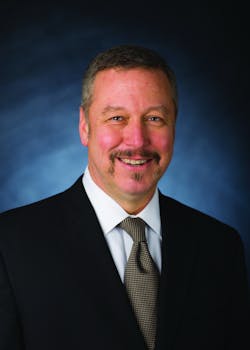Earlier this year, I took my first long-distance group motorcycle trip. Unlike long drives in a car or a coach with one vehicle and one driver, a group of bikers needs to do some rather detailed planning. You need to ensure you understand each person's equipment, abilities and also their limitations. You need to agree on a route, mileage between stops, and establish riding protocols such as who leads, where everyone else in the group will ride, your preferred formation, and shared knowledge of proper hand signals. It's an important planning task.
One of the best parts of the planning process is determining the route. A motorcycle trip isn't about getting somewhere where you hope to have fun. I hear of too many vacations and trips where people plug their destination into their GPS navigator, select the "fastest route" option, and then haul off down the interstate like it's a death race to get there. They paid for their all-inclusive on the beach, and, by God, they are spending every minute of their holiday at the beach. The kids only see the country side as it flies by at 75 miles per hour. Each gas/food stop looks like the last five gas/food stops.
I understand the need to maximize your limited holidays, but after years of flogging up and down the interstate system in order to get somewhere, I have found new joy in taking those roads less traveled, and making the journey a key part of the vacation.
A motorcycle trip is less about “where you go” — it’s mostly about how you get there, and what you see along the way. As my buddies and I sat around the table covered with maps and an atlas, I found a whole new way of looking at travel. Instead of drawing a line from Point A to Point B and seeking the fastest route, we found ourselves discussing topography, geography and history. We referred to features on the maps such as mountain ranges, rivers and historical sites. We agreed to limit each leg of the trip to no more than 120 miles — a decision my middle-aged, scar-riddled back deemed a sound requirement.
We made a decision that unless it was absolutely necessary, we would eschew fast food joints. We would stop and eat at local diners, barbeque joints, road houses and truck stops. We would find a hotel when we needed one, and would enjoy drinks with the locals once the kickstands were down for the night. We would see America.
Then there is the experience of actually taking the trip with a group of bikers. Riding in formation requires the utmost attention and focus. You must use your throttle, brakes and steering constantly to maintain your position while watching for hazards. There is no place in the formation for a drowsy or inattentive rider. Yet, while your conscious brain is focused on the critical task at hand, your mind is free to roam and reflect down unplanned paths.
As we rode along the Smoky Mountains, I recalled how we planned to ride along a spine in the mountains. When we rode alongside a river, I could picture in my head its source and its meandering path to the ocean. We stopped by Civil War battlefields and historic towns. I got a glimpse of how travelers such as Lewis and Clark must have viewed their adventurous journeys: not as attempts simply to get somewhere, but as a means to understanding the land, the flora, the fauna and the inhabitants. The road I was on soon became immaterial — its numerical designation irrelevant. I was traveling, and I was enjoying the journey. This was an enlightening change in my perception of travel.
As a security professional, I have become aware there needs to be a similar perception change in order to be an effective security manager. When I was primarily a security technologist, I thought in absolutes, and was focused on eliminating vulnerabilities of all types. When I became a security manager, I learned I was no longer to talk in terms security, but to talk in terms of risk. I needed to be able to communicate why instead of simply communicating how.
Like my change in travel perspective, I learned that route numbers and direct lines were really not that important anymore. I needed to understand the bigger picture, and look at the entire organizational security landscape. I had to travel through unexpected areas and travel at a different pace. You have seen me write many times that security is a journey, not a destination. How well you understand the topography, geography and history of your organization will ultimately determine how successful you will be as a security manager. It is all a matter of perception.
John McCumber is a security and risk professional, and author of “Assessing and Managing Security Risk in IT Systems: A Structured Methodology,” from Auerbach Publications. If you have a comment or question for him, e-mail [email protected].
About the Author
John McCumber
John McCumber is a security and risk professional, and author of “Assessing and Managing Security Risk in IT Systems: A Structured Methodology,” from Auerbach Publications. If you have a comment or question for him, e-mail [email protected].

